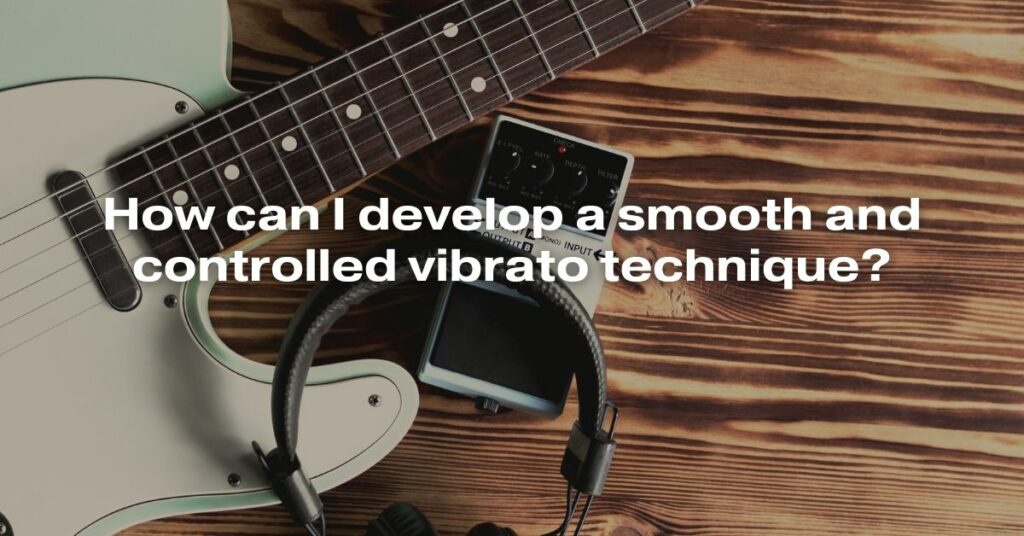Vibrato is a beautiful and expressive technique used by musicians to add depth, emotion, and character to their playing. Whether you’re a vocalist, a violinist, a guitarist, or any other kind of instrumentalist, mastering the art of vibrato can significantly enhance your musicality. In this comprehensive guide, we’ll explore the nuances of vibrato and provide you with actionable tips on how to develop a smooth and controlled vibrato technique.
Understanding Vibrato: A Musical Elixir
Vibrato is a musical technique where the pitch of a note is oscillated slightly above and below its regular pitch. This modulation creates a warm, pulsating effect that adds richness to the sound. Vibrato is commonly used in various genres, including classical, jazz, blues, and rock, and is a hallmark of virtuoso playing.
1. Mastering the Basics of Pitch Control
Before delving into vibrato, it’s crucial to have a firm grasp of pitch control. Work on playing or singing notes accurately and consistently. Practice scales, arpeggios, and melodic exercises to strengthen your pitch accuracy.
2. Developing Finger Strength and Flexibility (Instrumentalists)
For instrumentalists like violinists, cellists, and guitarists, building finger strength and flexibility is key. Regular exercises that focus on finger dexterity, such as trills and scales, can significantly enhance your vibrato technique. Additionally, hand and finger stretches can improve flexibility, allowing for smoother vibrato movements.
3. Breath Control and Diaphragmatic Support (Vocalists)
Vocalists, on the other hand, need to focus on breath control and diaphragmatic support. Practice deep breathing exercises to strengthen your diaphragm and control your airflow. A stable breath stream provides the foundation for a controlled and smooth vibrato. Vocal exercises that involve sustained notes are excellent for developing vibrato control.
4. Understanding Variations in Vibrato Speed and Width
Experiment with different vibrato speeds and widths to find a style that suits your musical expression. A fast, narrow vibrato creates intensity and urgency, while a slow, wide vibrato produces a more lyrical and emotive effect. Practice varying your vibrato to match the mood and context of the music you’re playing.
5. Listening and Imitation: Learn from the Masters
Listening to accomplished musicians who excel in vibrato technique is invaluable. Study recordings of your favorite artists and pay close attention to how they use vibrato to convey emotions. Imitate their vibrato styles and nuances, incorporating them into your practice sessions.
6. Developing Muscle Memory through Repetition
Repetition is the key to developing muscle memory. Dedicate regular practice time to vibrato exercises. Start slowly and gradually increase the speed as your control improves. Focus on consistent finger or vocal placement and maintain a relaxed posture to avoid tension, which can hinder vibrato development.
7. Seeking Guidance from a Skilled Teacher
A knowledgeable teacher can provide personalized guidance tailored to your specific needs. They can identify your strengths and areas that need improvement, offering constructive feedback and targeted exercises. Regular lessons with a skilled instructor can significantly accelerate your progress in mastering vibrato.
8. Patience and Persistence: The Virtues of Mastery
Developing a smooth and controlled vibrato technique takes time, patience, and persistent effort. Celebrate your progress, no matter how small, and stay committed to your practice routine. With dedication and perseverance, you’ll gradually refine your vibrato, transforming it into a powerful and expressive tool in your musical arsenal.
In conclusion, mastering vibrato is a rewarding journey that enhances your musicality and artistic expression. By understanding the fundamentals, practicing diligently, and seeking guidance when needed, you can develop a smooth and controlled vibrato technique that captivates audiences and elevates your musical performances to new heights. Embrace the process, stay passionate, and let your vibrato become a testament to your musical artistry.


